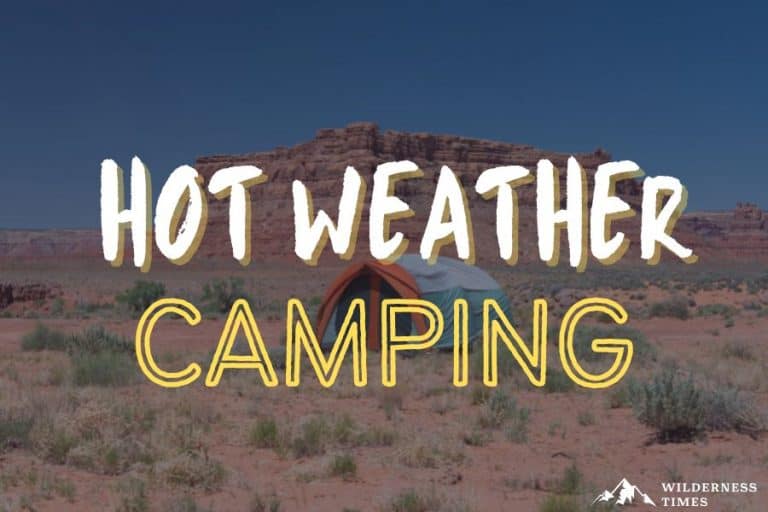Summer camping enthusiasts face the ultimate dilemma:
On one hand, the days are long, which makes them ideal for exploring nature.
On the other hand, they can get extremely hot.
Either way, it seems like you have to sacrifice comfort for adventure.
Or do you?
In this article, I’ll share some tips and tricks for camping in hot weather, so you can have the best of both worlds!
Table of Contents
ToggleCampsite Selection
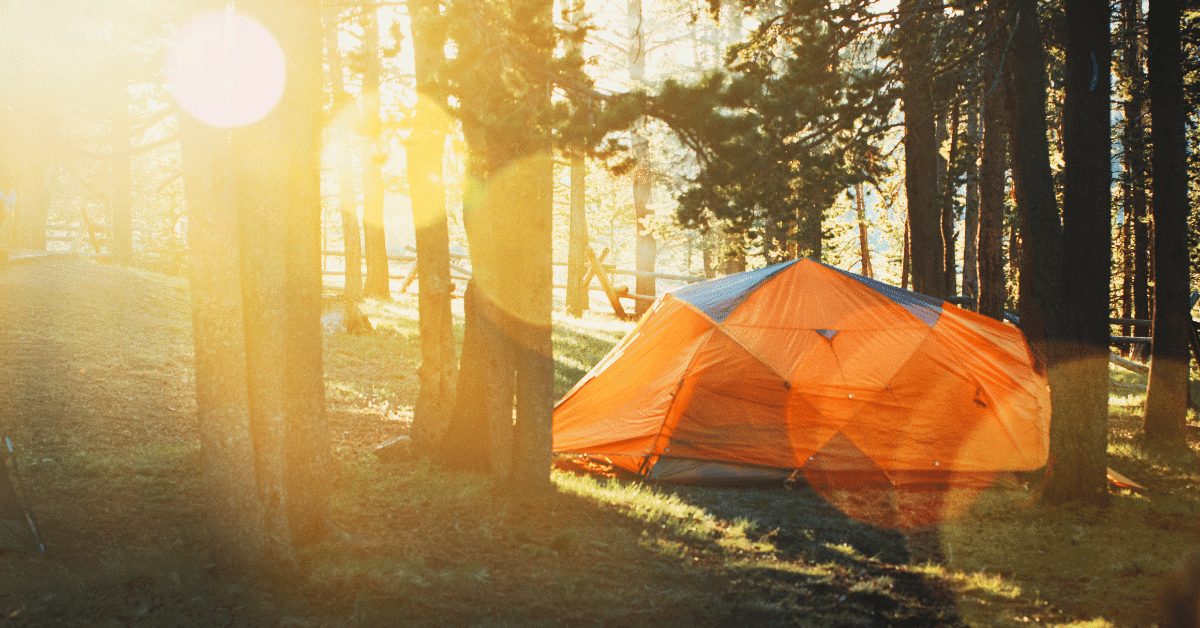
For camping in hot weather, picking the perfect spot to set up camp is very important.
Ideally, you want to find a campsite with plenty of trees that will keep you in the shade for a good part of the day – ideally from late morning to mid-afternoon. During this time, the sun is the hottest, and without shade, your campsite will be an open-air sauna.
Having a water source nearby during hot weather is great. During that time of the day when temperatures skyrocket, you can dip your feet in or even go for a swim to cool down.
With that being said, don’t pitch your tent in the summer heat right next to stagnant water. Mosquitoes breed and lay their eggs around lakes, swamps and slow-flowing rivers.
Let me warn you – those mosquito mothers-to-be are hungry and prepared to annoy you day and night trying to drink every drop of your blood. Once they swarm you, their buzzing will prevail over any other pleasant natural sound you wanted to enjoy.
Camping Gear Essentials
During the hottest months of the year, we can expect the nights to be rather warm, too.
There’s no huge temperature difference, so you won’t need half the equipment you use during spring or fall.
Tents
Let’s start with tents.
Those models with mesh bodies and a rainfly are perfect for camping in hot weather.
The mesh allows you to enjoy the breeze while staying safe from mosquitoes and other bugs. During the night, you can lay in your tent and stargaze.
Amazing, right?
Bedding
When it comes to a sleeping bag, you don’t really need one. Even those with the weakest temperature ratings are going to retain heat, which is quite the opposite of what you need right now.
Instead of a sleeping bag, you can use just a regular bed sheet. Of course, a sleeping pad or air mattress goes without saying, as surely no one likes sleeping on rough ground.
Of course, you can always bring a budget sleeping bag just in case. In some areas it can be hot during the day and quite cool at night.
Hammocks
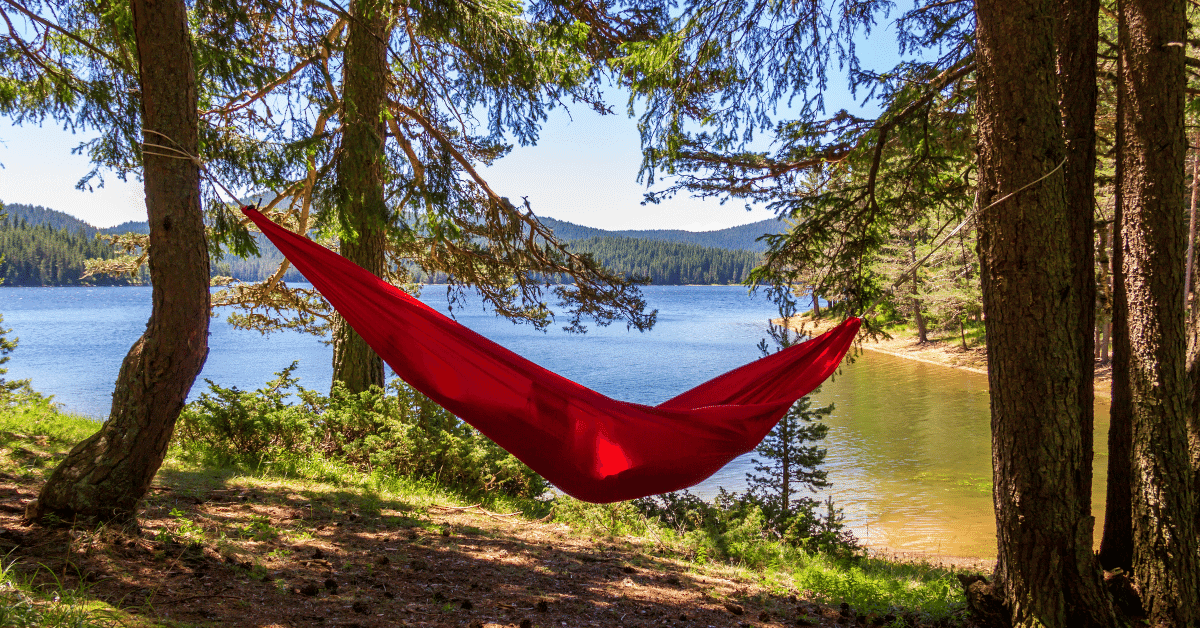
If you’ve never slept in a hammock before, this period is the perfect time to try that out. You just need two trees with the right distance between them to hang the hammock, and that’s it!
Newbies might not know this, but to hang a hammock you shouldn’t use just any plain rope. You need hammock straps, specially designed to support heavy weight. Plus, ropes can cause damage to the tree, whereas straps shouldn’t.
If you decide on sleeping in a hammock, I’d suggest getting a mosquito net and a tarp. The purpose of the first one is self-explanatory. A tarp is needed, not for protection from rain (although it can do that, too) but against sun.
Fans & ACs
Depending on where you’re camping, some days can get extremely hot. The temperature barely drops as the sun goes down, and sleeping in a tent can be unbearable.
That is, unless you have a way to cool it down.
If you’re at a campground and have access to electricity, or you own a power generator, there’s no reason not to enjoy the cold air coming out of an AC. You can sleep without tossing and turning trying to find a comfortable position. .
If an AC is too much of an investment or you simply don’t have anywhere to plug it in, don’t despair.
Portable fans do a similar job. They’re powered by batteries and can keep you cool the whole night.
They’re lightweight and portable, and some models can even be attached to your tent roof, so they don’t even take up any of your precious tent space.
What To Wear
Choosing what to wear sounds like child’s play, but it’s far from that.
A random tank top and shorts won’t do. In fact, there’s a lot of things to consider when picking the right attire.
Materials
Have you ever been to the Middle East or North Africa?
Everybody wears loose-fitting clothing with long sleeves and ankle-length pants there. If you think about it, it makes more sense than the tank tops we usually wear.
Their robes are long to prevent the sun from directly touching their skin, and loose to allow air to circulate. They’re usually made of cotton, but sometimes, you might even see them wearing wool.
Wait, what?
I know it might sound crazy at first, since we usually wear wool during winter, but think about it. Wool is extremely breathable. But the thing that makes it exceptional for a summer camping trip is that it draws moisture away from your skin into the air, keeping you cool.
Choice Of Colors
Just like the material, the color of your clothes matters, too. During hot days, you should always go for light colors, as they reflect the sun, instead of absorbing it.
Plus, mosquitoes are attracted to the heat dark-colored clothing absorbs, which is another reason to dress in lighter shades.
Shoes And Accessories
Hats are also a staple during this time of the year. Whether it’s a cap or a fishing hat, it doesn’t matter, as long as it has a long brim that keeps the sun out of your face.
Let’s talk about shoes for a little bit. During hot days, I prefer using sandals. My feet can breathe, and I can take them off and put them back on in a breeze. When not hiking, there’s really no reason to stay in heavy, thick walking boots.
Don’t Forget Your Skin
Lastly, I need to mention something that’s not clothing, yet you should be wearing it at all times – sunscreen.
Regardless of how fast you may tan, staying exposed to sun rays for a long period of time is not healthy.
And not only because of sunburns. Premature skin aging and skin cancer are just a few things that long exposure to UV rays may cause. That’s why sunscreen should be your staple, even on cloudy days.
Remember, apply it in generous amounts, and not just to your face and shoulders, but ears, neck, feet… any part of the body not covered with clothes.
And not just once!
You need to reapply your sunscreen every two hours. If you’re swimming or sweating like crazy, apply it even more often. Sun damage can’t be reversed, but it can be prevented.
Food And Drink
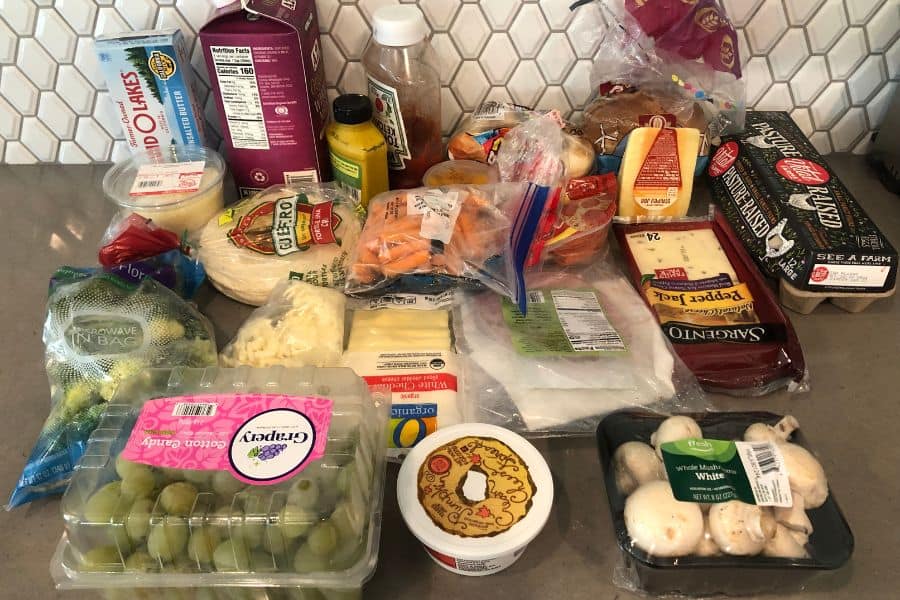
Hot soup during summer… It doesn’t sound as appealing as eating it on a snowy day, does it?
Now, fresh fruit, bagel sandwiches, tacos, hot dogs, bacon and eggs, macaroni and cheese. These are a few of my favorite camping meals!
The main thing is to make sure that you have a mix of perishable and non-perishable items, because the last thing you want to deal with is a cooler full of rotten food and nothing to eat in the middle of nowhere.
Bring backups and make sure to bring enough food for the whole family!
Staying Hydrated
During warmer months, having water available at all times is more important than ever.
When it’s warm, we sweat, and that’s only one way water leaves our bodies.
We don’t usually take dehydration too seriously, but we really should.
It damages our organs, from our kidneys to our heart and brain.
If you’re thirsty, that means you’re already dehydrated.
To avoid that, you need to take in plenty of water throughout the whole day.
According to the U.S. National Academies of Sciences, Engineering, and Medicine, these are the recommended daily fluid intakes:
- Around 15.5 cups (1 gallon) for men
- Around 11.5 cups (0.7 gallons) for women
During hot summer weather, these should be your bare minimum. Try to drink more, especially if you’re staying active during the day. One cup of water every 15 to 20 minutes will do just fine.
But don’t overdo it either! Drinking too much water can also be dangerous, as it lowers your sodium blood levels. 48 ounces per hour should be your top limit.
Your daily intake doesn’t just revolve around water, though. All kinds of fluids contribute to that, from coffee and juices, to snacks and meals. In fact, ⅕ of our daily fluid intake comes from food and drinks other than water.
Keeping Food Fresh And Cool
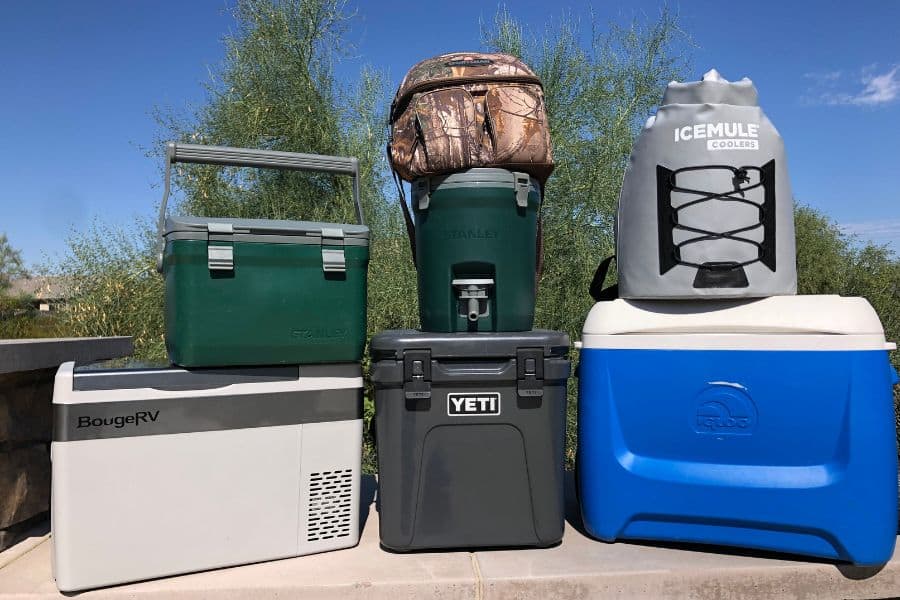
When it comes to food, the main problem during hot weather is keeping it cool. Put some meat out on a hot day, and you can basically watch it go bad within a couple of hours.
Coolers are one thing worth investing in for trips during this time of the year.
For an overnight camping trip, styrofoam or soft coolers like the IceMule Pro can do the job. For a lengthier camping trip, hard coolers are ideal.
And there’s a product on the market for every budget, so you don’t have to spend half your savings on a cooler. Although, it’s worth investing in a quality unit that’ll keep your food supply fresh on summer days.
Read: What Size Cooler do I Need for Camping?
To Cook Or Not To Cook
When it comes to the choice of food, I’d recommend packing plenty of meals that don’t require cooking. That is, unless you really want to sit next to the fire during an already hot day. What’s more, summer is the peak time for grilling fires, so keep that in mind.
During the day, sandwiches, fruit and granola bars are a great option, since you don’t have to prepare anything. Usually, evenings are somewhat cooler, so you can enjoy a barbecue for dinner.
Read: How to Cook Over a Fire (Pro Campfire Cooking Tips)
Keeping Bugs Away
There aren’t many things that can take the fun out of camping like bugs can.
Whatever you do, it seems like you need an extra arm or two just to shoo them away.
Your best tool against these nuisances is bug spray. As the main ingredient, these sprays usually contain DEET, a common name for diethyltoluamide. Invented by the USDA for the US army in 1942, DEET works like a magic repellent for mosquitoes and other bugs.
DEET is a powerful tool against bugs, but it leaves a greasy feel some people hate. If you’re one of them, another option is a spray with picaridin. It’s odorless and leaves no film on your skin.
Repellent coils are another great tool for keeping bugs at bay. They usually contain either pyrethrin, which is extracted from chrysanthemum flowers, or citronella.
Coils release smoke that repels bugs, and if you’re worried about its effect on our health, let me reassure you. Compared to other things in the air we’re exposed to every day, this smoke is insensible. Unless you’re burning coils 24/7, their effect on your health is negligible.
Keeping Your Pets Cool
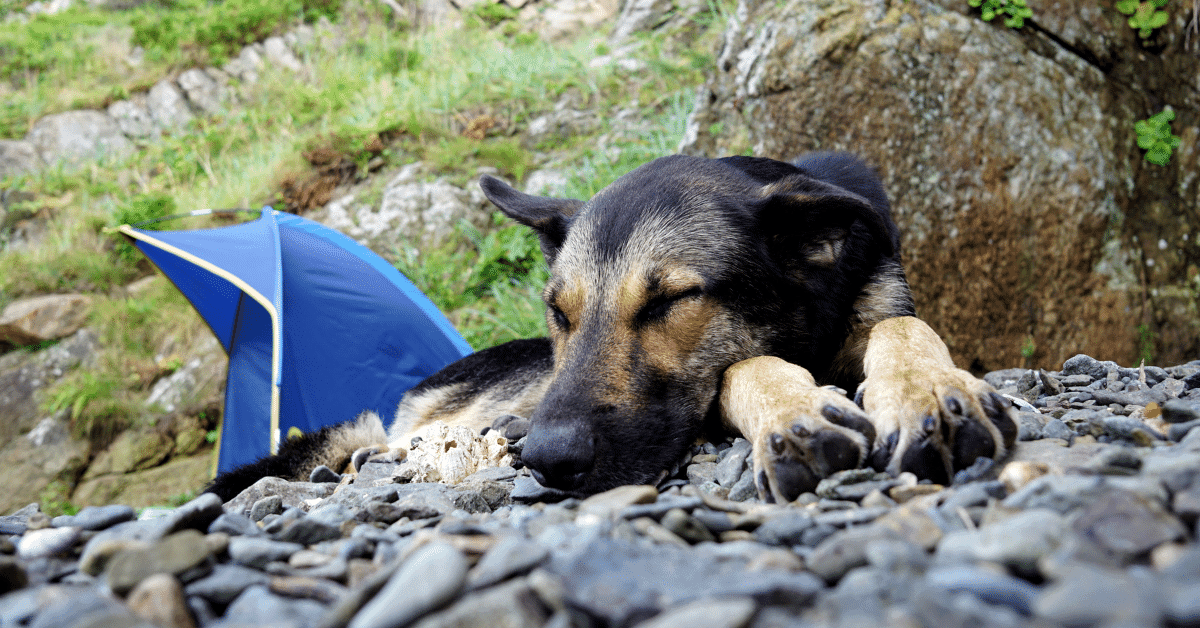
Camping with pets is fun, but you need to remember they might not enjoy the warmth as much as you do. They don’t sweat like us, so you need to take extra precautions to keep them cool.
First things first, ensure they have a shady spot to hang out at. If there’s no natural shade, make one with a tarp.
Aside from that, you should also get them a cooling dog bed. They’re filled with a gel that’s activated by the pressure of your dog’s weight.
Your pets should have clean drinking water available at all times. They can get dehydrated at a much faster pace than we do, so instead of pondering if they’re thirsty or not, let them drink whenever they want.
Finally, this goes without saying – never leave them inside a tent, or even worse, a car. It’s like closing them in a sauna, and that’s way too much heat for them.
Know The Signs Of Heatstroke
During extremely hot days, the risk of heatstroke is high.
It happens when you sweat so much that your body loses the ability to control its internal temperature. As a result, it can rise to dangerous levels.
Heatstroke is the final stage of heat-related illness.
Here are some of its symptoms:
- Body temperature over 103°F
- Dry skin, no sweating
- Rapid pulse
- Headache
- Dizziness
- Nausea or vomiting
- Confusion or even unconsciousness
Here, you can find a full list of symptoms and more information about heat stroke.
These symptoms don’t just drop out of the sky. Some early signs are a heat rash, extreme sweating, fatigue and thirst. Then, you start feeling cramps and severe exhaustion.
These signs are pretty clear, meaning you can easily avoid reaching the final stage of heat-related illness.
As soon as you notice you’re sweating way more than usual, stop whatever you’re doing, and move to the shade. Remove excess clothing and drink plenty of liquid. You can also put a wet towel over your neck to further cool down.
That’s All Folks
Surely, no one enjoys extremely hot weather.
But that’s not something that should stop you from camping.
In this article, I’ve shared with you some different ways to make the best use of long summer days, without getting roasted by the sun. With these tips, you can stay cool and comfortable even in the hottest weather.
One thing to keep in mind is – hot weather is not only annoying, but can be bad for your health, too. Heat stroke is extremely dangerous, yet easily avoided.
One of the easiest ways to stay cool and avoid heat related illness is by investing in a great summer tent. Here are some of our favorite tents for hot weather.
And lastly, another great way to avoid the heat altogether is to find the best time to go camping in your state.


